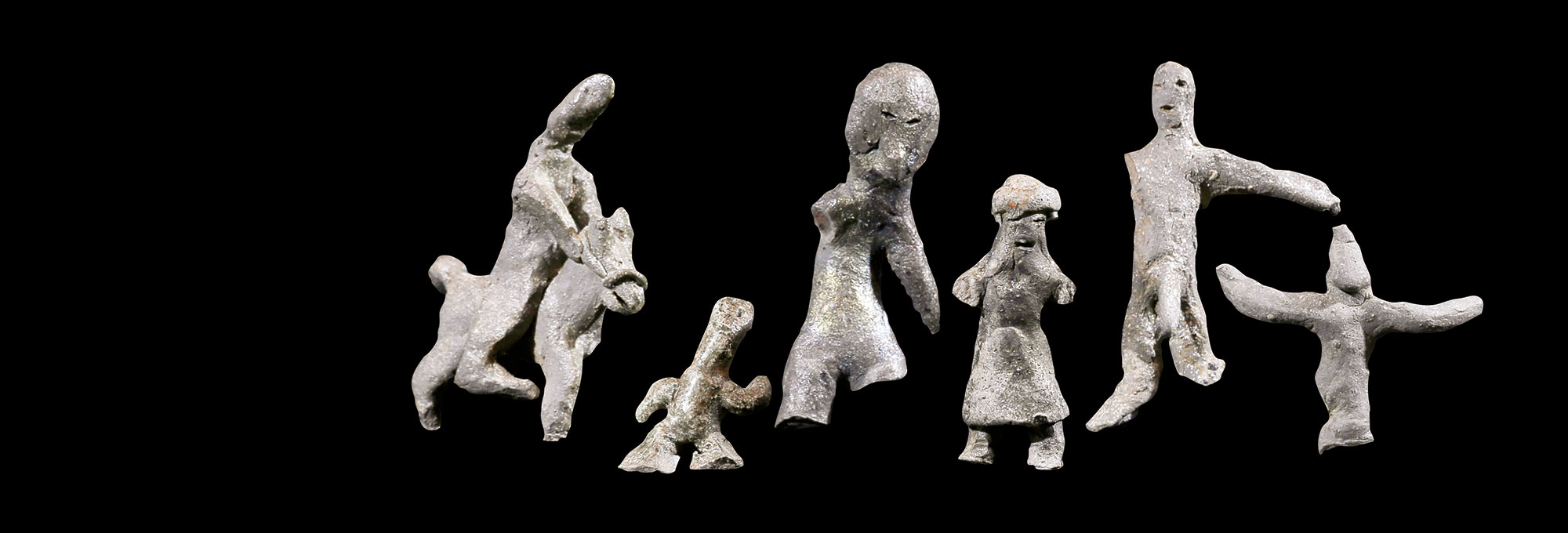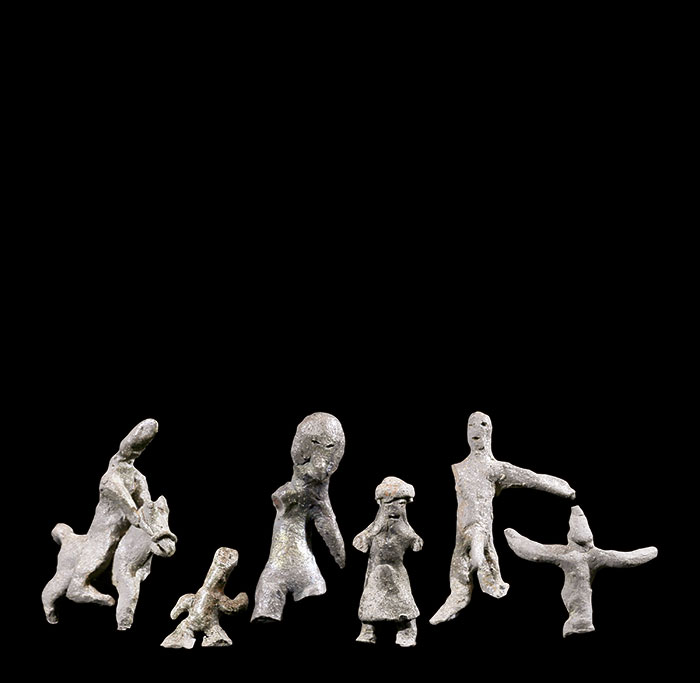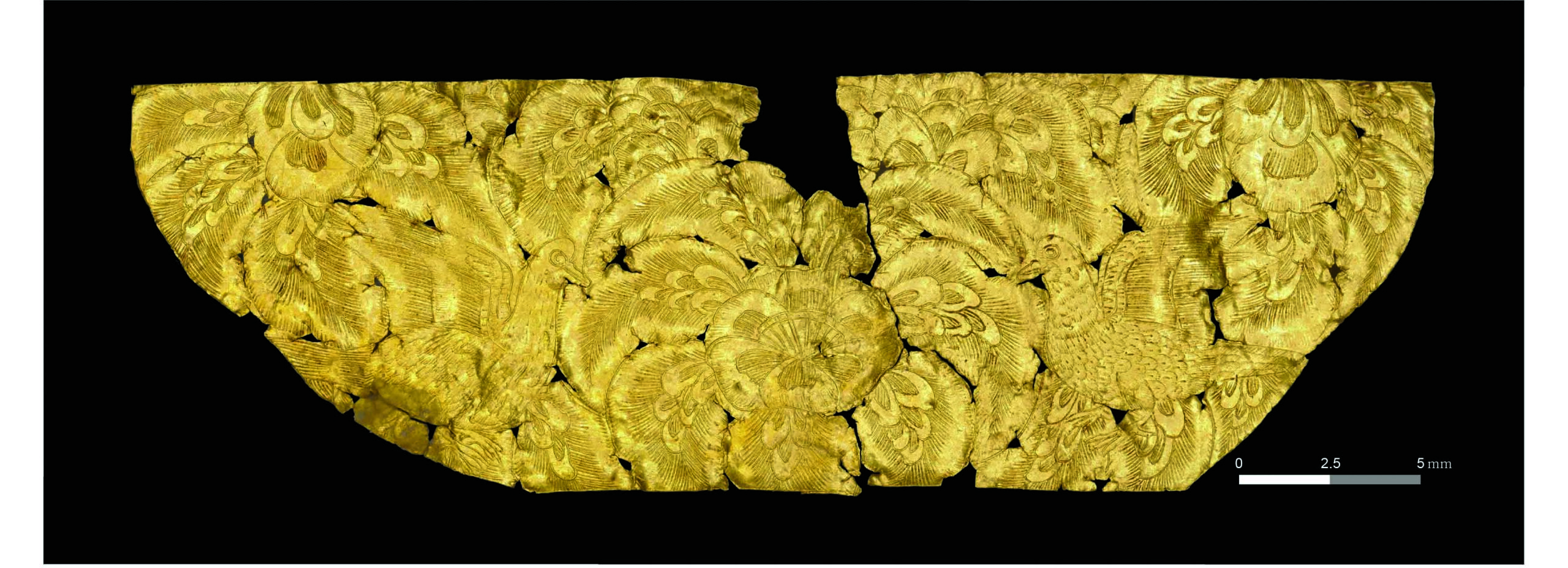At the palace of Wolseong in Gyeongju, several hundred miles south of Seoul, archaeologists have found a group of sixth-century clay figures dating to the Silla dynasty (57 B.C.–A.D. 935). The dolls, which measure between one and eight inches tall, include one wearing a turban and caftan believed to represent a Sogdian, a member of an ancient Iranian civilization. The Silla are known to have had active exchanges with Central Asia, Europe, and the Middle East, but few clay dolls resembling people from the Middle East have previously been found. Other clay figures found at Wolseong include one riding a horse, a man with exaggerated male genitals, and several dancers in lively, dynamic postures.













